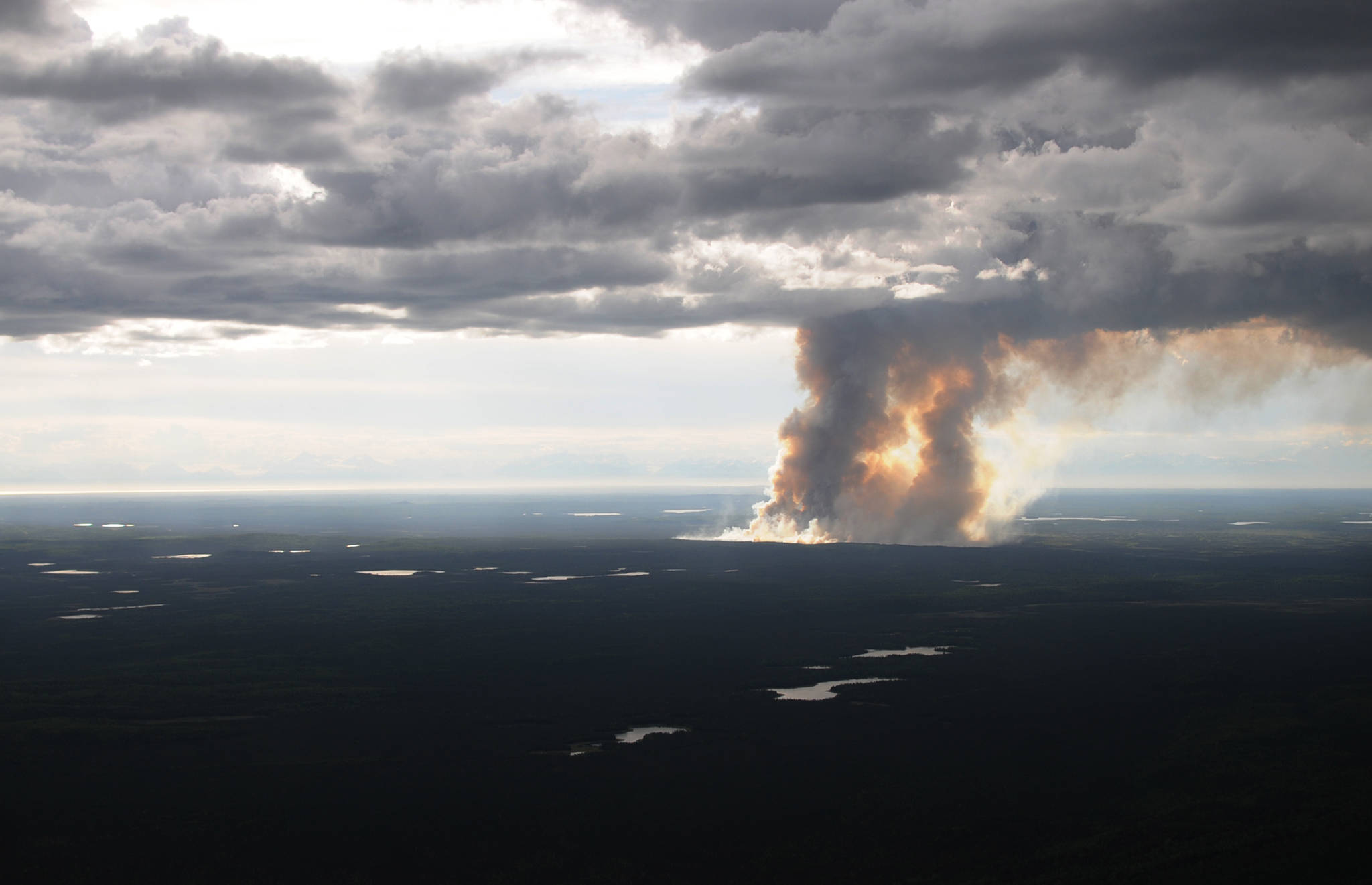Anyone charged with a crime related to setting fires will likely have tougher punishments to face in the future.
The Legislature passed a bill, House Bill 355, before concluding its session that changes the classification of burning offenses in criminal code. Today, burning offenses are criminal misdemeanors with between $100–$1,000 fines associated with them and mandatory court appearances. The bill changes the structure to be more like fish and game violation offenses, adding them to the bail schedule. It also adds a class C felony offense — criminal burning of forestred land in the second degree.
The bill also expands the right of Alaska Division of Forestry or other wildfire responders to enter private land when responding to a fire, suspected fire, administering the law or investigating a fire. It also expands the authority of the Alaska Department of Natural Resources commissioner to designate periods as fire season at any time in order to require burn permits or prohibit burning.
Rep. David Guttenberg (D-Fairbanks), the bill’s primary sponsor, wrote in his statement that the primary reason for the bill was to help reduce the number of human-caused fires in the state, particularly in the wildland-urban interface near communities.
“Alaska cannot afford to keep having wildland fires the size of Delaware,” he said in a press release from the Alaska House Majority Coalition after the bill’s passage. “House Bill 355 increases accountability and is a proactive step in forest fire prevention. It will increase public safety and reduce the loss of life and property due to irresponsible and negligent burning.”
Most of the wildfires in Alaska in 2017 were caused by people, but the most acreage overall burned is caused by lighting-sparked blazes, according to information from the U.S. Bureau of Land Management. In 2017, Alaska saw 362 wildfires, 208 of which were connected with human instigators. However, those 208 fires only burned 6,897 acres, compared to the 646,251 acres burned by lightning-sparked fires, according to the BLM.
On the Kenai Peninsula, the largest burn in 2017 – the East Fork Fire east of Sterling — began with a lightning strike on the Kenai National Wildlife Refuge. After cordoning it away from the Sterling Highway and the community of Sterling, fire managers let it burn out to the northeast, consuming some old stands of black spruce, ending in a total of approximately 1,016 acres burned, according to the last updated from the Alaska Division of Forestry on June 27, 2017.
Human-caused wildfires can be devastating, too. Dozens of people lost their homes in the 2015 Sockeye Fire in the Matanuska-Susitna Valley, which allegedly began with smoldering burn pile near Willow. The state charged a Matanuska-Sustina Valley-area couple with starting the fire, carrying the possibility of fines, jail time and responsibility for the millions in costs for firefighting. A jury found the couple not guilty in May 2017.
Fire season kicks off in late April or early May in Alaska, much earlier than it has in the past. As the climate warms and the snow recedes earlier in parts of the state, fires can start much sooner. Wildland firefighters worked to control an approximately 250-acre fire in Interior Alaska near Delta Junction this weekend.
The BLM’s Office of Predictive Services is forecasting a drier, warmer summer across Southcentral Alaska this year, according to a monthly forecast from May 10. Recent rain has mad many of the fuels unburnable, reducing the chance of a fire, but the U.S. Drought Monitor shows an area of abnormally dry across Anchorage, the Kenai Peninsula, across Cook Inlet and onto the western Alaska Range.
“The rest of Alaska has had ample snowpack and will continue to slowly recharge groundwater,” the forecast states. “Temperatures have been cool, but are forecasted to begin warming into the upper 40s and even low 50s for much of the state in the next couple of weeks. This will rapidly accelerate the melting process.”
The Alaska Division of Forestry expressed support for the bill, saying in a document submitted to the Legislature that the state needs a broad new education program as well as amendments to statutes and regulations to reduce human-caused wildfires in the state.
“There is a need for improved penalties for lesser offenses because seemingly minor violations, such as fireworks or campfires during a burn closure, can result in major catastrophes,” the document states. “A full spectrum of penalties from very minor to severe is needed, along with effective policies and education to foster needed compliance and bring a significant reduction in wildland fires.”
Many of the Kenai Peninsula’s communities fall into the category of wildland-urban interface, or communities living on the edge of vast unpopulated areas. The Funny River Fire threatened Sterling, Soldotna, Funny River and Kasilof, ultimately consuming about 200,000 acres of forest but no homes; the Card Street Fire verged into the edge of Sterling and claimed at least one home. Both fires were suspected to be human-caused.
Kenai Peninsula Borough Fiscal Projects and Community Manager Brenda Ahlberg wrote in a letter of support on the borough administration’s behalf that the bill would help curtail some of the risk for the peninsula’s communities.
“Let’s face it: we live in the trees — the wildland urban interface — or WUI, and fuels reduction projects on private and public land holdings should complement fire as a natural occurrence on the landscape,” she wrote. “What shouldn’t be acceptable is that approximately 98 percent of all fire starts on the peninsula are human-caused … 98 percent.”
The DNR estimated in a fiscal note that the bill would have any direct fiscal impact and that costs of updating regulations and some training for fire prevention staff would be absorbed by the department. The Alaska Department of Law estimated no additional cost in a separate fiscal note as well. The bill has been sent to Gov. Bill Walker, who has to sign it before it becomes law.
Reach Elizabeth Earl at eearl@peninsulaclarion.com.


